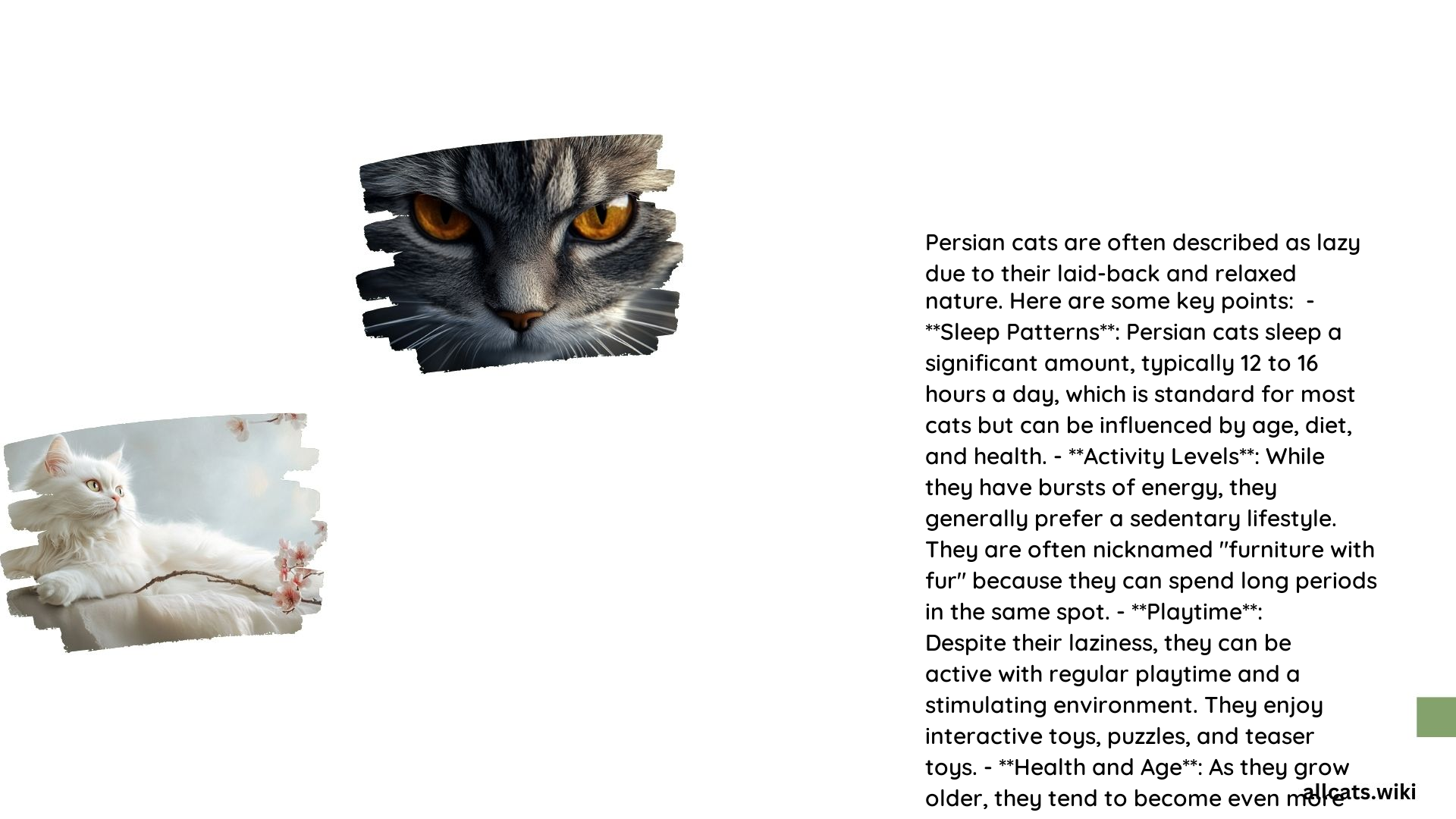Are Persian Cats Lazy?

Persian cats are often perceived as lazy due to their laid-back and relaxed nature. However, it’s more accurate to describe them as having a preference for a calm and sedentary lifestyle rather than being inherently lazy. They are known for their love of beauty sleep, with an average sleep duration of 12 to 16 hours a day, which is standard for most cats.
Do Persian Cats Tend to Be Inactive?

While Persian cats do spend a significant amount of time sleeping, they are not entirely inactive. They can have bursts of energy and enjoy playtime, especially when stimulated by their environment. Regular playtime and interactive activities can help keep them active and engaged.
Are Persian Cats Generally Energetic or Sedentary?
Persian cats are generally more sedentary than energetic. They are often described as “furniture with fur” due to their long periods of inactivity. However, they do appreciate and benefit from regular playtime, which can include activities like chasing a laser pointer, playing with toys, and exploring their surroundings.
Typical Behavior Patterns and Activity Levels
| Behavior | Description |
|---|---|
| Sleep Patterns | Persian cats sleep a lot, similar to other cat breeds, with an average of 12 to 16 hours a day. Their sleep patterns can be influenced by age, diet, and overall health. |
| Playtime | Despite their laid-back nature, Persian cats can be quite playful when encouraged. They enjoy interactive toys, puzzles, and teaser toys, which help stimulate their activity levels. |
| Environmental Influences | Their environment plays a crucial role in their activity levels. A stimulating environment with plenty of toys and opportunities for play can help keep them more active. |
Factors Contributing to Perceived Laziness
- Physical Characteristics: The flat face (brachycephalic) of Persian cats can lead to breathing difficulties, which may contribute to their sedentary lifestyle. Additionally, their long, thick fur requires daily grooming, which can be time-consuming and may reduce their inclination to be highly active.
- Temperament: Persian cats are known for their calm, gentle, and affectionate nature. They prefer a quiet atmosphere and are not as demanding or energetic as some other breeds.
- Environmental Influences: The lack of stimulation in their environment can contribute to their perceived laziness. Providing a stimulating environment with regular playtime can help increase their activity levels.
Daily Routines and Recommended Activities
- Playtime: Engaging in playtime twice a day is recommended to keep Persian cats active and healthy. Activities such as chasing a laser pointer, playing with interactive toys, and using teaser toys can help stimulate them.
- Rest Periods: Given their love for sleep, it’s essential to respect their rest periods. However, encouraging short bursts of activity during the day can help maintain their overall health.
- Recommended Activities: Providing cat trees for climbing and jumping, as well as engaging in play with feather toys or laser pointers, can help stimulate activity in Persian cats.
Examples of Behavior in Various Settings
- Home Environment: In a home setting, Persian cats are often found lounging in quiet spots, enjoying the company of their owners. They are happy to be petted and groomed but may not initiate play unless stimulated.
- Social Settings: Despite their calm nature, Persian cats are sociable and get along well with kids, other pets, and strangers. They are not easily disturbed by loud noises or sudden movements.
Products and Strategies to Stimulate Activity
- Interactive Toys: Using interactive toys, puzzles, and teaser toys can help stimulate activity in Persian cats.
- Cat Trees: Providing cat trees for climbing and jumping can encourage physical activity.
- Laser Pointers and Feather Toys: Engaging Persian cats with laser pointers or feather toys can stimulate their natural hunting instincts and encourage more active play.
